#artoftheapplication
Text
The Art of the Application | Representing Your Artwork Online

Let your work speak for itself clearly and successfully.
Work Samples are an integral part of every NYSCA/NYFA Artist Fellowship application. Read on for tips to consider when putting together your portfolio for submission.
Documenting Your Work:
Before documenting your work, think about what aspects you want to highlight for the review panel. Perhaps it’s your use of materials or the fine details within your work. Make sure you have documentation that captures these elements clearly.
Before photographing your artwork, review the environment surrounding the object. Remove any unwanted items that may be surrounding your artwork as this will distract the panel from your art.
For Literary works that are excerpts from a larger body of work, choose the sections you feel can stand on their own with limited context needed (though you can provide some context through your Excerpt Explanation).
If you are submitting documentation of an interactive piece, take the time to capture it in a way that shows how you would expect the viewer to interact with your work.
Make sure that your artworks are in the correct file format listed in the Visual Arts, Literary, or Media Guidelines or else they will not successfully upload to your application.

Curating Your Work Samples:
Before uploading your work, consider the order that you want each work to be viewed, remembering that the panel will review work in the order in which they are submitted.
If you are uploading more than one body of work, make sure that the corresponding works are grouped together.
Literary works should include a title page with a table of contents indicating any breaks in your document.
Upload only your strongest works. You are not required to submit the maximum number of files or page for your application if you feel that your work can be better represented through fewer works.
Key Questions to Consider:
How would I want the panel to experience my body of work in person and how can I best capture this?
Are there any details of my work that I want to bring to the panel’s attention?
Which format (video or still images) will best showcase my work?
-Eleysha Sajous, Program Associate, NYFA Grants
The current NYSCA/NYFA Artist Fellowship application cycle closes on January 22, 2020. For more information about the NYSCA/NYFA Artist Fellowship, visit our website and view our Fellowships FAQ. NYSCA/NYFA Artist Fellowships are administered with leadership support from New York State Council on the Arts with the support of Governor Andrew M. Cuomo and the New York State Legislature.
Find out about additional awards and grants here. Sign up for our free bi-weekly newsletter NYFA News to receive announcements about future NYFA events and programs.
Images from top: Donna Uchizono (Fellow in Choreography ’19), State of Heads, 1999; Blane De St. Croix (Fellow in Architecture/Environmental Structures/Design ’19), High Peaks, 2017
#application tips#applicationtips#artist opportunities#artistopportunities#nyscanyfafellowship#nysca nyfa fellowship#art of the application#artoftheapplication#announcements#instagram#business of art#businessofart
1 note
·
View note
Text
The Art of the Application | Work Statements and Cultural Statements

We’re sharing insider tips for your NYSCA/NYFA Artist Fellowship Application.
The NYFA Grants team has created a series of blog posts with information to help you prepare the materials needed for your application(s). In this edition of The Art of the Application, we’ll share tips on writing a Work Statement and guidance in helping you decide if you should include a Cultural Statement.
How Do I Write a Work Statement?
This may be a new term to you, but the concept will be familiar. The Work Statement is like an Artist Statement, in that it should describe the primary interests of your practice. Whereas an Artist Statement is often broad and overarching, your Work Statement needs to be specific to the work you are presenting within your application.
Your NYSCA/NYFA Artist Fellowship Work Statement can be up to 100 words in length and is required. It may seem daunting to distill your work down to 100 words or less, but trust that it’s a worthwhile challenge! However, be mindful when you condense your statement into a short format; don’t let your ideas devolve into vague sentences or generalizations. Instead, hone in on some of the key factors that inspired the work in your application, and describe how these elements relate to some of the larger ideas within your artistic practice.
As an exercise, consider this question: How would you explain your work to someone who has never experienced it before?
Keep it simple. It’s best to avoid language that is overly theoretical or philosophical. You don’t want to make your statement so complex that someone has to read it two or three times in order to understand it. Keep in mind that the panel is reviewing hundreds of Work Statements. Statements that speak clearly and provide concrete examples allow the panel to access your ideas more quickly. And remember, with only 100 words, you should never stop at the first draft!
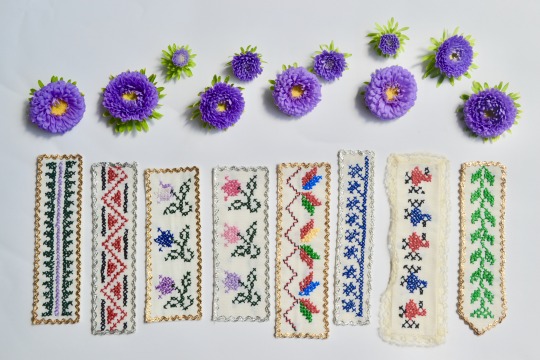
Should You Supply a Cultural Statement?
Another aspect of the NYSCA/NYFA Artist Fellowship application is the Cultural Statement. This statement gives applicants the opportunity to describe how their practice relates to, or is rooted in, a cultural technique, tradition, or community.
The Cultural Statement should give the panel insight into a specific cultural community or practice, and highlight any techniques that may need further context.
Describe how your background in a cultural community has shaped your work.
Share any relevant cultural history or stories that influenced your work.
Provide more detail about the techniques you use, where they originated, and why you choose to continue this tradition.
It’s good to take advantage of any opportunity an application gives you to describe your work, but you should only submit information that is appropriate to your practice. Supply a Cultural Statement only if your connection to a cultural community, technique, and/or tradition is integral to your work. If not, don’t spend your time trying to argue an angle. Instead, focus your attention on strengthening other components of your application. Keeping your materials relevant, informative, and focused is key when submitting an application to an artist opportunity in general.
Depending on the discipline you’re applying in, you may have the opportunity to also provide a Technical Statement and/or Excerpt Explanation. These statements will allow you to go into further detail, so don’t feel like you have to say everything in your Work Statement or Cultural Statement.
For more information about the NYSCA/NYFA Artist Fellowship, visit our website and view our Fellowships FAQ.
- Hannah Berry, Program Associate, NYFA Grants

NYSCA/NYFA Artist Fellowships are administered with leadership support from New York State Council on the Arts with the support of Governor Andrew M. Cuomo and the New York State Legislature.
Find out about additional awards and grants here. Sign up for our free bi-weekly newsletter NYFA News to receive announcements about future NYFA events and programs.
Images, from top: Ginny Casey (Fellow in Painting ‘18), Balancing Act, 2017, oil on canvas; Wafa Ghnaim (Fellow in Folk/Traditional Arts ‘18), Floral Bookmarks, 1988-2001, cross-stitch on fabric
#application tips#applicationtips#artist opportunities#artistopportunities#nyscanyfafellowship#nysca nyfa fellowship#nysca nyfa artist fellowship#art of the application#artoftheapplication#hannah berry#WorkStatements#instagram#business of art
6 notes
·
View notes
Text
The Art of the Application | NYSCA/NYFA Artist Fellowship Application Feedback
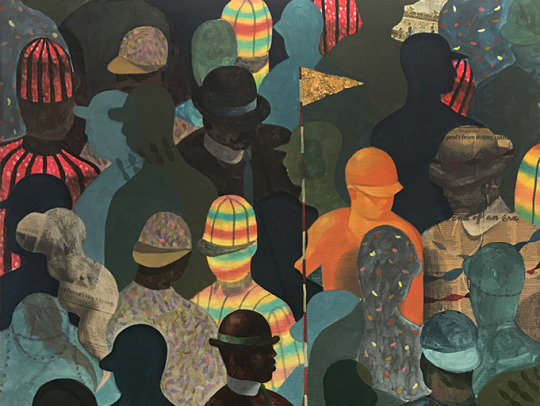
Here are tips for making your next grant application stand out from the crowd, courtesy of the NYFA Grants team.
For the 2017/2018 application cycle alone, The New York Foundation for the Arts (NYFA) received a total of 3,071 applications for the NYSCA/NYFA Artist Fellowship. In total, we reviewed 12,100 pages of manuscript, nearly 19,710 images, and more than 1,980 minutes of video excerpts! Due to the high volume of applications we received, in this cycle and in others, we are unable to give applicants individual feedback. However, we wanted to provide some general insights gained from our panel review process to help you with future grant opportunities.
Start your work samples off strong!
If you’re submitting images, choose one of your strongest works as your first image. During the NYSCA/NYFA Artist Fellowship panel, the moderator reads aloud the title, date, and dimensions of your 1st and 6th images. If you decide to present two bodies of work, the 6th image is a good place to introduce the second series. For literary artists, manuscripts should begin with a paragraph that creates a strong sense of place or character, and does not necessarily have to be from the first page of your writing. If you are working in video/film or audio, your excerpts will be reviewed first, so make sure they start exactly where you want panelists to begin watching or listening.
Take time to document your work.
Your work sample is only as strong as your documentation. Make sure your work samples properly and professionally portray your work. Images that include unnecessary background clutter are distracting. Hang a painting on the wall to document it and leave space around a piece so the image shows the edges of the work. If possible, ask a friend or hire a professional photographer to document your work for you. If you’re an Interdisciplinary artist working in a time or movement-based practice, be sure to submit video/audio work samples alongside your images so that the panel can get a real sense of your work. If your work is an installation or is interactive, use enough work samples to convey the scope of the project.
More is not necessarily better.
Panelists often comment that applications that cram in too much actually detract from the stronger works. The panel wants to see a cohesive application with work that shows integrity, conviction, and a clear vision. We recommend applicants do not include more than 2 or 3 projects or series in their applications. You do not need to reach the work sample limit if you feel your work is represented well with fewer pages, images, videos, etc.
Your supporting statements should be as strong as your work samples.
Panelists are usually most taken with applications that show strength in overall presentation of the work, including the statements. Statements should be original and specific to the application to which you are applying. Be clear and concise, and avoid using language that is overly theoretical, poetic, or experimental. Use as much space as you need, but again, less may be more. It is better to have a shorter statement than to stretch the full word count by going off topic, repeating ideas, or speaking about work that isn’t in your application.
Provide additional information if allowed.
If an application allows you to add titles and descriptions to your work samples, you should. A well-used title or material description can sometimes be the thing that gives a panelist an “ah-ha” moment, and helps move an application into the next round. The additional information section is also your opportunity to briefly note any elements that may not be apparent in the work samples themselves, and which will give the panel more context for understanding your work.
Give yourself plenty of time to upload your work samples and submit your application.
Though NYFA considers every application for review, panelists will quickly disregard applications where the videos didn’t properly upload, images were too small or terribly pixelated, or the wrong manuscript was uploaded.
Make sure to check for spelling and grammatical errors before you submit.
A simple mistake can be detrimental to your application. Have a friend or colleague read through your manuscript and/or support statements before you submit.
Try not to get discouraged.
Applying for arts opportunities and funding is a practice in itself, and is often as much a part of being an artist as being in the studio. Keep in mind that panels are always changing, and every year offers a new opportunity. The majority of artists apply multiple times before receiving not only the NYSCA/NYFA Artist Fellowship, but most awards or grants. Just because you were not selected for an award doesn’t mean your application wasn’t strong or that your vision isn’t worth pursuing. As Sejal Shah, a 2018 Fellow in Fiction, said:
“If your stories are like mine, they might be described as non-traditional, experimental, and poetic. You might start to doubt that what you do has relevance, that it is understood, and worth reading. It doesn’t fit neatly into a category. The news about the NYSCA/NYFA Artist Fellowship came after I had received a few rejections in a row for other things. I mentioned this string of rejections to a friend, and she said whenever that happens to her, it means there’s a big yes around the corner. It turned out that was true in this case.”
- Hannah Berry, Program Associate, NYFA Grants
Find out about additional awards and grants here. Sign up for our free bi-weekly newsletter NYFA News to receive announcements about future NYFA events and programs.
Image: Derek Fordjour (Fellow in Painting ‘18), Rally Finale, 2017, oil, acrylic, graphite, newspaper, and foil on wood panel
#application tips#applicationtips#artist opportunities#artistopportunities#nyscanyfafellowship#nysca nyfa fellowship#nysca nyfa artist fellowship#nyscanyfaartistfellowship#art of the application#artoftheapplication#instagram#business of art
2 notes
·
View notes
Text
The Art of the Application | Being a First-Time NYSCA/NYFA Artist Fellowship Applicant

Read on for tips that will help you navigate the application process.
Submitting an application for a NYSCA/NYFA Artist Fellowship for the first time can be challenging. See below for tips that will make your application process smoother.
Before you start:
Read the guidelines to ensure you meet the eligibility criteria!
Depending on your discipline, you will need to read either the Visual Arts, Literary, or Media guidelines.
As you read through the guidelines, highlight or take note of what you will need to prepare and what important things you must remember before submitting your application.
When selecting your work samples:
Select artworks created within the last five years.
Select artworks that are a strong representation of your vision and voice as an artist.
Select artworks that create a cohesive visual story.
Make sure that your work samples are in the correct format and file size so they’re uploaded successfully.
Take the time to properly and clearly document your work samples.
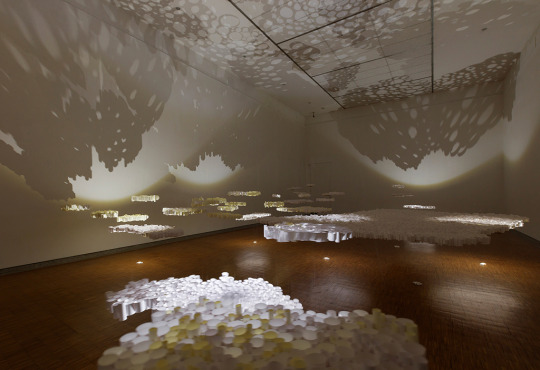
When completing the application form:
Write an outline or plan for each statement. This will make it easier to flesh out your thoughts and make sure you are specifically addressing each section.
For your required statements, make sure you focus on representing a clear vision and voice.
If you feel your work needs more context, you may use one or more of the optional statements (Cultural Statement, Technical Statement, and/or Excerpt Explanation) to give the panel more information about the way you create your work or the way you intend your work to be experienced.
Write in clear, simple language and avoid using “arts speak.” You should also avoid referencing other artists as this will take the panelist’s attention away from your work.
The panel will view work samples in the order they are uploaded. Therefore, put time into organizing your work samples, particularly if you are providing images.
Polishing your application:
Double check all of your written statements for any errors. If possible, have someone else review them.
Make sure all your contact information is correct.
In your written statements, make sure you are only referencing artworks that appear in your work samples.
Give yourself enough time to apply! Plan to submit your application a few days in advance so if you run into any issues, NYFA can help you troubleshoot.
-Eleysha Sajous, Program Associate, NYFA Grants
The current NYSCA/NYFA Artist Fellowship application cycle ends on January 22, 2020. Visit our website for more information about the NYSCA/NYFA Artist Fellowship, including FAQs and additional Application Tips. NYSCA/NYFA Artist Fellowships are administered with leadership support from New York State Council on the Arts with the support of Governor Andrew M. Cuomo and the New York State Legislature.
Images: Matthew Conradt (Fellow in Photography ’19), Artifices, 2016, and Sun Young Kang (Fellow in Architecture/Environmental Structures/Design ’19), Neither Here nor There, 2017
#application tips#applicationtips#artist opportunities#artistopportunities#nyscanyfafellow#nysca nyfa fellowship#art of the application#artoftheapplication#announcements#instagram#business of art#businessofart
0 notes
Text
The Art of the Application | Advice from 2019 NYSCA/NYFA Artist Fellowship Panelists
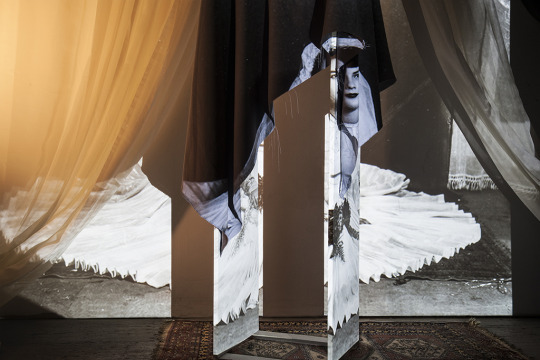
Key takeaways from each of 2019′s review panels to help you with future applications.
In 2019, NYFA received more than 2,500 NYSCA/NYFA Artist Fellowship applications across the disciplines of Architecture/Environmental Structures/Design, Music/Sound, Choreography, Photography, and Playwriting/Screenwriting. While we are unable to provide individual feedback based on the tremendous response, we have summarized general feedback from our panelists and provided a few specific takeaways from each discipline.
General Comments:
Panelists agreed that the order in which work samples were presented made for a strong first impression. So think about how you are ordering the samples and what you want them to communicate about you as an artist.
Ensuring images were in focus and framed well and audio/video excerpts started at the climax of each piece was a plus.
Less is more! Applications that presented two to three bodies of work made more of an impact than applications highlighting more than four bodies of work.
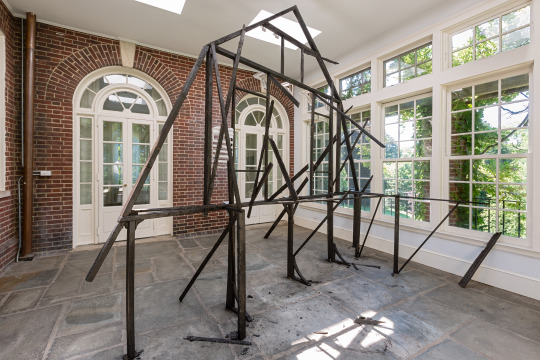
Discipline-Specific Feedback:
Architecture/Environmental Structures/Design:
Make sure images are clear of foreign objects or distractions.
Show the scale of your work.
Consider the way your work samples are being reviewed; images of detailed presentation boards do not translate well in a fast-paced review environment. Stick to highlighting certain aspects of your design in individual images.
Music/Sound:
Make sure your submitted recordings are the final version; out-of-tune instruments stand out like a sore thumb!
Use your metadata. Make sure you tell the panel where the climaxes are in your work and what instruments/techniques you are using to create your sounds.
If you have a music score, include it, and highlight where your selected excerpts fall.
Choreography:
For submissions of full-length performances, make sure you indicate breaks or intermissions in your metadata or edit them out.
Invest time and effort into making quality recordings of your performances.
Not all performances provide the same experience when not viewed live, so make sure you give insight into how the work is to be experienced in your Technical statement.
Photography:
Number your works correctly before uploading them so that they are viewed in the order you would like panelists to see them.
Make sure to document your work only and not the work of others in installation shots. Be mindful of what other objects are in the frame.
Aim for depth, not breadth. Avoid including too many bodies of work.
Playwriting/Screenwriting:
Focus on quality over quantity—you don’t need to submit the maximum 20 pages.
Not all written works can shine in just 20 pages. Select works that move quickly and can be understood without the panel having to know too much of the backstory.
The beginning of the script might not always be the best place to start, so start at a place that will capture the panelists on the first page!
Submit completed works to ensure your are showcasing your best work.
Final Reminders!
The panel review process is thorough, but quick. So make sure you are presenting your strongest works.
Share your story to make a connection.
Title your work samples! This can help panelists understand you, your story, and what you are presenting.
Curate your work samples.
Submit completed recent works.
Tell a consistent story through your application in both your written statements and visuals.
SUBMIT BEFORE THE CLOSING DATE!
Good luck!
The next NYSCA/NYFA Artist Fellowship application cycle begins on September 24, 2019. For the discipline categories listed above, the next application cycle will open in Fall 2021. For more information about the NYSCA/NYFA Artist Fellowship, visit our website and view our Fellowships FAQ. NYSCA/NYFA Artist Fellowships are administered with leadership support from New York State Council on the Arts with the support of Governor Andrew M. Cuomo and the New York State Legislature.
Find out about additional awards and grants here. Sign up for our free bi-weekly newsletter NYFA News to receive announcements about future NYFA events and programs.
Images: Rehan Miskci (Fellow in Photography ’19), Hollow, 2015, and Sonya Blesofsky (Fellow Architecture /Environmental Structures/Design ’19), Afterimage, 2017
#application tips#applicationtips#artist opportunities#artistopportunities#nyscanyfafellowship#nysca nyfa fellowship#art of the application#artoftheapplication#announcements#instagram#business of art#businessofart
0 notes